越前焼の歩み
History of the Echizen ware
HISTORY OF THE ECHIZEN WARE
History of the Echizen ware
HISTORY OF THE ECHIZEN WARE
越前焼の歩み
-
Late Heian period
Echizen kilns at the end of the Heian period,It began at the end of the 12th century with the introducing the skills of Tokoname kiln and Sanage kiln from the Tokai Region.
-
Late Muromachi period
In the late Muromachi period, pots, jars (Image 1 ), and mortars were the major products. Echizen wear had become one of the largest pottery sites along the Sea of Japan. The products were delivered over a wide range from Hokkaido to Shimane Prefecture.
A large number of Echizen ware mortars used until the mortar was worn out were excavated from Katsuyama-kan in Kaminokuni-cho, Hokkaido, and an Echizen ware medicine hammer and grating board, a large jar used for indigo dyeing and storage, and tea utensils thought to have been specially ordered were excavated from the remains of the Ichijodani Asakura Remains in Fukui City, a leading medieval city site in Japan.
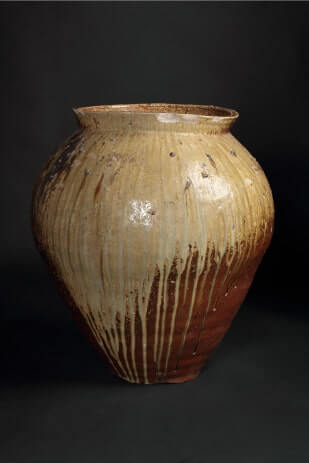
【Image 1】Echizen kiln《Large pot》Muromachi period(16th century)
-
Edo Period
In the Edo period, the distribution range was narrowed. However, in addition to pots, jars, and mortars, other items such as bottles for sake or oil, or ceramics for religious use such as flower vases were manufactured. Attractive products were manufactured by using reddish soil, glazing with straw ashes or ashes, and applying patterns using comb teeth or carving.
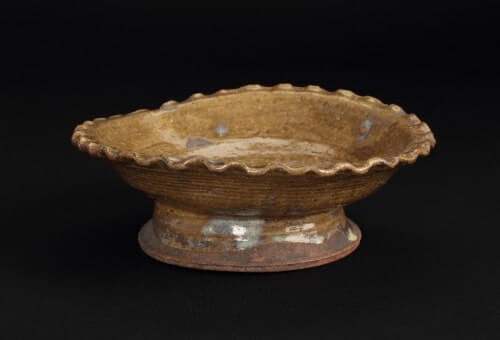
【Image 2】Echizen kiln《Ash glaze bowl》Edo Period(19th century)
-
Meiji period
In the Meiji period, while trying to make porcelain, various pottery added color to life, such as producing colored pottery with the aim of exporting overseas.
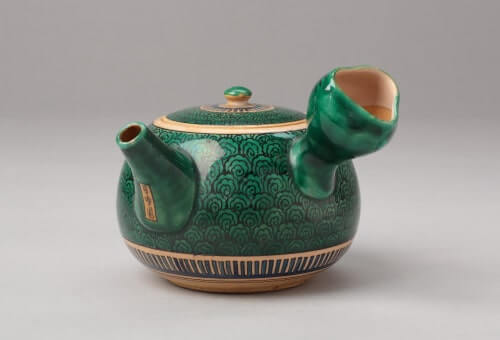
【Image 3】Nisshoen《Teapot》Meiji period(19th century)
-
Showa period
From the Taisho period to the Second World War, it was a difficult time, but the kiln continued to produce. After the war, pottery related to the Hokuriku Main Line was also produced, such as the production of soba plates (Image 4 ) that were served near the station at Imajyo Station.
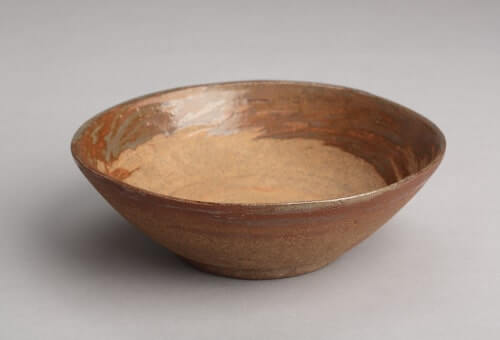
【Image 4】Hisaka-yaki《Soba plate》Showa period(1950-1962)
-
1948
The history of Echizen ware was researched by Mr. Kyuuemon Mizuno, a local researcher. The historic value of Echizen ware was highly evaluated because "Echizen pottery ranks with Five Ancient Kilns". The concept of "Six Ancient Kilns of Japan" was established.
六 古 窯

*6 cities and towns…
Echizen ware:Echizen-cho, Fukui
Seto ware:Seto City, Aichi
Tokoname ware:Tokoname City, Aichi
Shigaraki ware:Koka City, Shiga
Tanba ware:Tamba Sasayama City, Hyogo
Bizen ware:Bizen City, Okayama
-
1968
Echizen ware Promotion Association was formed with the purpose of technologically upgrading potteries in Fukui and expanding the distribution routes of Echizen ware products.
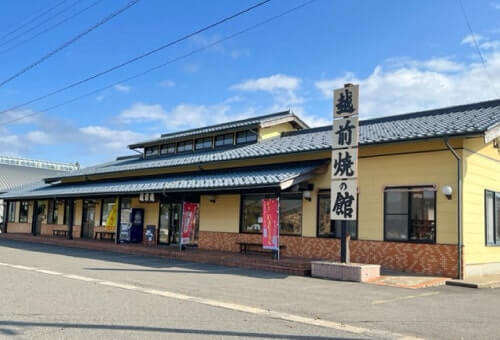
Echizen Pottery Industry Cooperative Association
-
1971
Echizen Pottery Village centering on Fukui Prefectural Museum of Ceramics was established. Echizen ware Industrial Cooperative Association was established. Attention to Echizen ware increased, and the boom continued to this day.
Echizen ware has a long history and culture, and its tradition is still passed down, and a new history is being created by artists and potters active in Fukui Prefecture.
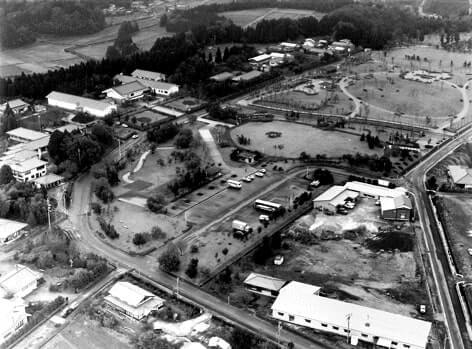
Echizen Pottery Village
-
1986
Echizen ware was designated as a traditional craft by the Ministry of Economy, Trade and Industry.
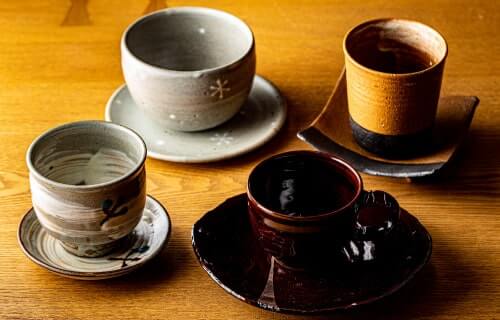
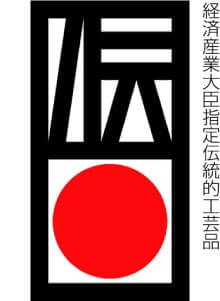
-
2017
The Six Ancient Kilns of Japan(Echizen wear・Bizen wear・Tanba wear・Shigaraki wear・Tokoname wear・Seto wear), was authorized as Japan Heritage by Cultural Affairs Agency.
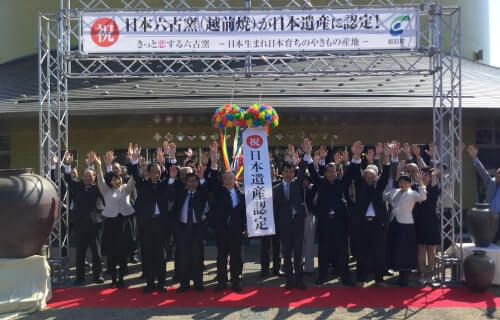
Certification of Japan Heritage
-
2022
Echizen ware is registered as a regional collective trademark by the Patent Office.
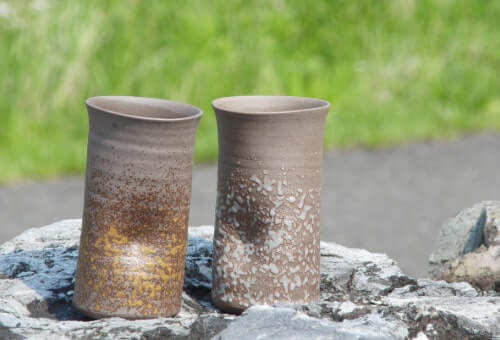
beer mug











